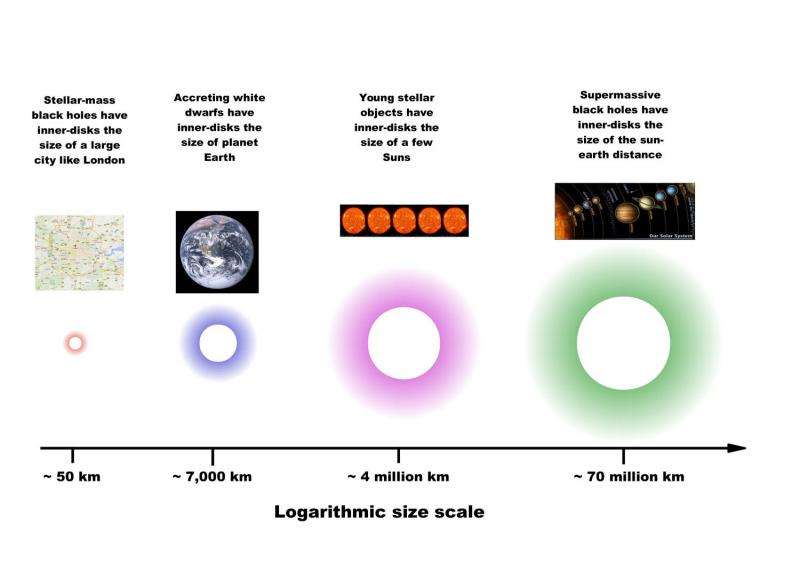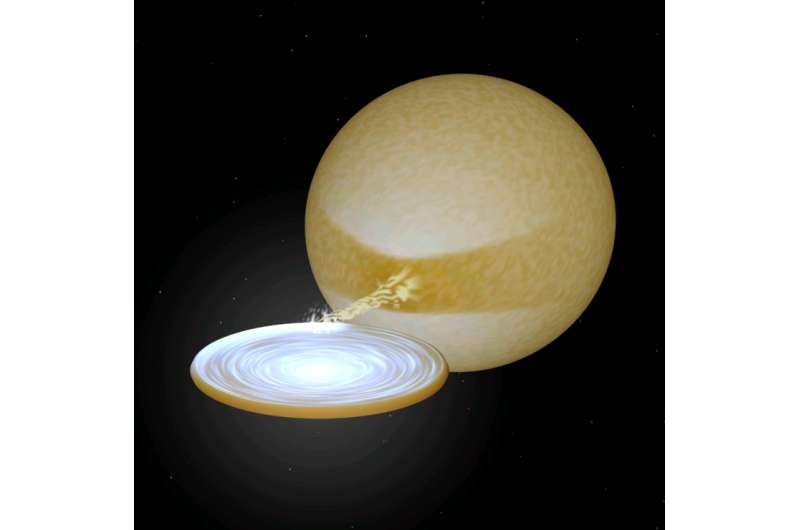Figure showing the different size scales of accreting objects. Credit: Simone Scaringi
A paper coauthored by Tom Maccarone, a Texas Tech University associate professor in the Department of Physics, studies one of the most important but least understood processes in astronomy: accretion, or the growth in mass of an object by gravitationally collecting material from its surroundings.
The article, titled "Astrophysical accretion is a universal process in objects from proto-stars to supermassive black holes," is published in the most recent issue of the journal Science Advances.
"In our paper, we discovered a relationship that spans the range of different types of accreting objects, from proto-stars, much like our sun was at its time of birth, to white dwarfs to supermassive black holes with a billion times the mass of the sun located in galaxies millions of light-years away," Maccarone said. "In these systems there is some characteristic timescale for the variability – typically the large brightenings and fadings occur with that timescale. What we have found is that two important properties of the object are its physical size scale and the rate at which it is accreting matter."
The paper discussed a unified scenario for understanding brightness variations from accretion disks around different types of stars and stellar remnants. Previous work unified the variability in disks around black holes of different mass ranges, but now scientists can bring in accreting white dwarfs and even proto-stars by considering not just the mass of the star but also its size.
"Interestingly, there is no evidence the mass of the object affects the timescale," Maccarone said. "That the objects all fit on a universal scale suggests that the process of infall of matter is a universal process. Until recently, there has been relatively little discussion between the scientists who try to understand how proto-stars grow and the scientists who try to understand how supermassive black holes grow, but these findings suggest that there should be."
An accretion disc around a black hole. Credit: University of Leicester
The study's lead author is Simone Scaringi, a Humboldt Research Fellow at the Max Planck Institute for Extraterrestrial Physics in Garching, Germany. The earliest ideas for this study came about when Scaringi visited Maccarone in Lubbock during the summer of 2014.
"I've known him for about a decade, since he was a student at my previous institution, and he and I have been working together for about four years," Maccarone said. "It is often just good to visit and talk face to face with collaborators, and that was his main motivation for coming out here."
More information: "Accretion-induced variability links young stellar objects, white dwarfs, and black holes," Science Advances, advances.sciencemag.org/content/1/9/e1500686
Journal information: Science Advances
Provided by Texas Tech University

























